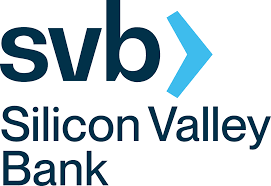Silicon Valley Bank (SVB), the leading financial institution for the US tech industry, recently filed for Chapter 11 bankruptcy protection, sending shockwaves through the global financial and tech sectors. The bank’s UK subsidiary, Silicon Valley Bank UK (SVB UK), has also faced significant challenges, including regulatory pressures and fierce competition in the crowded UK banking market. However, there may be a glimmer of hope for SVB UK in the form of a potential takeover by a company owned by a powerful royal from the United Arab Emirates (UAE).
The Current Situation of SVB and SVB UK
SVB’s bankruptcy filing on March 10, 2023, was a dramatic turn of events for a bank that had long been a pillar of the US tech industry. SVB’s clients include some of the most successful and innovative tech startups in the world, and the bank’s services, such as lending, investment, and advice, have been instrumental in their growth and development.
SVB UK, while separate from its parent company, has faced its own challenges in recent years. The UK banking market is highly competitive and tightly regulated, making it difficult for SVB UK to expand its business and maintain profitability. The bank has also faced increased scrutiny from UK regulators over its anti-money laundering practices and other compliance issues.
The collapse of SVB has left many of its clients and partners in a state of uncertainty, as they wonder what will happen to their investments, loans, and relationships with the bank. SVB UK, which has a smaller but still significant client base, is also at risk of losing business and reputation if it cannot find a way to navigate the fallout from the collapse.
The Potential Role of the UAE Royal’s Firm
Enterprises owned by the UAE’s Sheikh Mohammed bin Zayed Al Nahyan, who is also the crown prince of Abu Dhabi, are reportedly in talks to acquire SVB UK. The companies involved are said to be part of the Mubadala Investment Company, a sovereign wealth fund that manages more than $250 billion in assets and has investments in various sectors, including technology, healthcare, and finance.
The potential acquisition of SVB UK by Mubadala could offer several advantages for both parties and the wider tech and financial sectors. Mubadala, with its deep pockets and extensive network, could provide fresh capital, expertise, and global connections that SVB UK desperately needs to recover and grow. Mubadala could also help SVB UK expand its reach beyond the UK and tap into new markets, such as the Middle East and Asia.
For Mubadala, the acquisition of SVB UK could be a way to diversify its portfolio and reduce its reliance on oil and gas revenues. SVB UK, with its focus on the tech sector and its established client base, could offer Mubadala a foothold in a high-growth industry and potential synergies with its existing investments.
Of course, any potential acquisition of SVB UK by Mubadala would be subject to regulatory approval from UK and possibly US authorities. This could involve a lengthy and complex process, especially given the heightened scrutiny of foreign investments and the ongoing fallout from SVB’s collapse. Mubadala would need to demonstrate that it has the financial resources, operational capabilities, and strategic vision to run SVB UK effectively and comply with the relevant laws and regulations.
Conclusion
The recent developments regarding Silicon Valley Bank and its potential acquisition by a UAE royal’s firm have caused a stir in the financial world. While the situation is still unfolding and there is no definitive outcome yet, it is clear that SVB is facing significant challenges, both in the US and abroad.
However, with the support and intervention of a powerful and well-resourced entity like the UAE royal’s firm, SVB may have a chance to weather the storm and emerge stronger than ever. It remains to be seen what the future holds for SVB and its stakeholders, but one thing is certain: this is a story that will continue to unfold in the coming days, weeks, and months, and it is one that will be closely watched by investors, industry observers, and the public at large.





